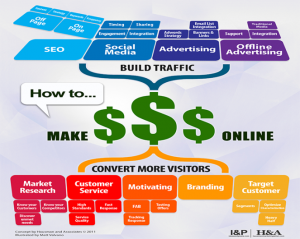
As a business owner, it’s exciting to see your business expand into new countries. On the flip side, international expansion can bring an array of new challenges.
Often small businesses wander into global growth by accident. The result of an opportunistic deal in another country. The deal went smoothly, the sales process was similar, and now the sales team is excited by the prospect of expanding into a new market.
You hear comments like:
“Our local market is highly competitive. There’s an opportunity to expand into the US. Let’s divert some of our lead generation efforts in that direction.”
But, for any major undertaking, it’s always important, to begin with, a sense of purpose. Is entering a new market part of your long term strategy? Can you afford to commit resources to this endeavour? Are your operations prepared for geographical expansion?
Before diverting resources toward a global marketing strategy, here are some things to consider:
Do you have a solid domestic market?
Ahead of transcending the borders of your home country, perfect your local business model. Refine your marketing process, your sales process, and your operations. Once you are “effective and fluid” on your home turf, it will be easier to expand internationally.
What can you learn from existing prospects?
Inbound marketing techniques lend themselves toward international expansion. You may find that thirty percent of your lead generation brings prospects from outside the UK. Rather than these leads, use the data to assess the viability of entering new regions, looking at things like:
- The current traffic metrics by state or region;
- Which content tends to be the most popular;
- Are the leads coming from a particular vertical;
- Can you identify the role of the prospect;
- Research market pricing in that area;
- Consider options for working with a channel.
Markets are fundamentally different
Markets with similar business cultures, buying cycles, and decision-making processes can be fundamentally different. Change the language and culture and those differences grow exponentially.
The US sales process is very different to the UK sales process. In the US, buyers prefer to deal with an American company; they are used to a well-defined sales process; and, selling in America is part of the culture. However, the US is also more comfortable doing deals despite never meeting face-to-face. In Britain, face-to-face relationship building is key to the selling process.
Identify a beachhead
You can’t sell everywhere successfully. Use the data you having been collecting to identify a beachhead market. A location with a target audience similar to your domestic audience; a market with a similar sales process; and, a place with the potential for expansion.
Keep in mind the fundamentals. Create buyer personas which capture the nature of the buyers and the buying process in your new target market. And if you are considering a channel strategy, develop partner personas.
Taking on global marketing can seem like a daunting undertaking, but it’s manageable if you set clear goals and think about one country at a time. Start taking advantage of some of the tips and resources above, and share them with your team members to begin weaving them into your current activities.
Business & Finance Articles on Business 2 Community
(77)








